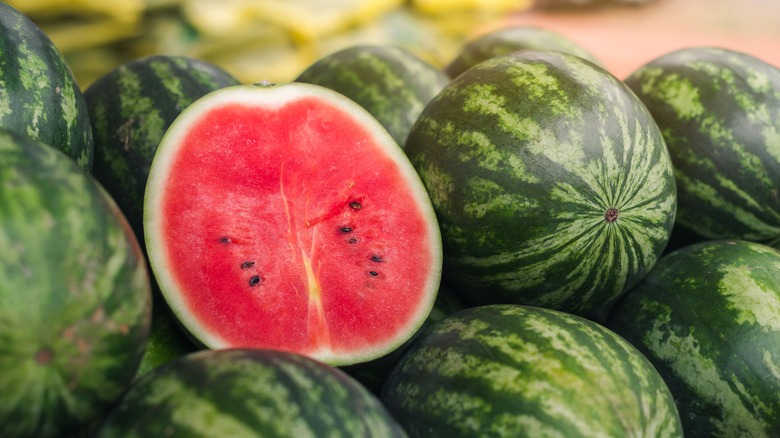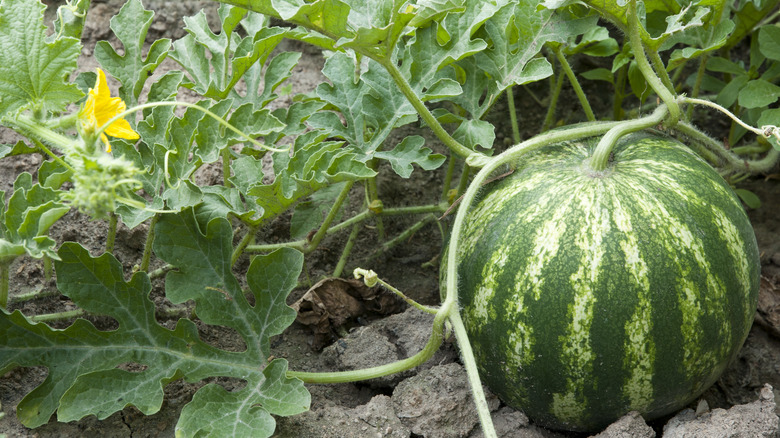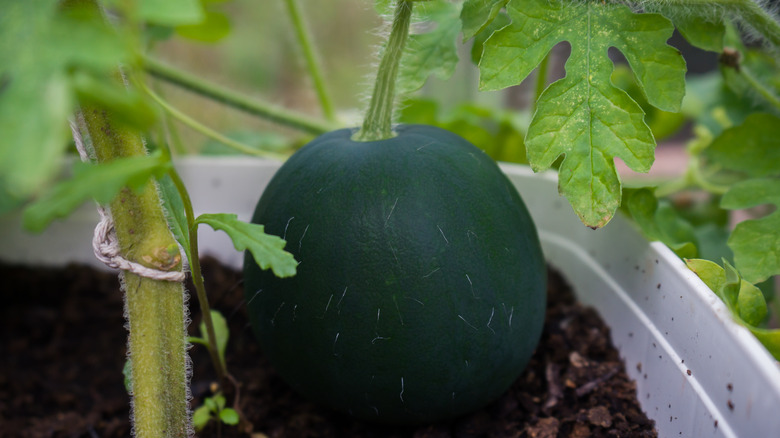Grow Watermelons In Chilly Climates With These Juicy Tips
Few crops are quite as synonymous with hot summer days as the watermelon. The sizzling dog days of summer are when watermelons thrive. If you garden in a cooler zone with a shorter growing season, you can still enjoy homegrown watermelons — it just requires a little more planning. By starting early, extending your growing season, and choosing the right varieties, you can successfully grow your own watermelons, even in chillier climates.
Regardless of where you are growing watermelons (Citrullus lanatus), they require loamy soils with good drainage and plenty of sun. They also require a significant amount of room. Just one watermelon vine can require over 18 feet of space, though growing your melons vertically is a great way to save room in your garden. Watermelons also benefit from nitrogen-heavy fertilizer. Additionally, as their name suggests, watermelons require significant amounts of water to grow well. Give your plants around an inch or two of water per week for most of the growing season. Then, water less once the fruits start to mature.
Start watermelon plants early and protect them from the cold
Watermelon plants are not frost-hardy, so if you opt to direct sow the seeds, you'll need to wait until at least your last frost date. Ideally, you should wait until soil temperatures have reached 70-degrees Fahrenheit to plant watermelons. Unfortunately, if you're growing in a cooler zone with a short growing season, you may not be able to wait that long to start your watermelon seeds. In that case, start them indoors and transplant the seedlings out once temperatures are warm enough. Watermelon seedlings have delicate roots that don't like to be disturbed, so be very careful when transplanting them. Be sure to harden off the seedlings to limit transplant shock.
Another way to start watermelon seeds when temperatures outside are still cool is by using row covers or planting in a hoop house. The soil and air temperatures inside these structures are far warmer than the outside temperature, allowing you to start your watermelon seeds sooner in spring and continue harvesting later into the fall. Make sure to either remove or open up the structure during the warmer parts of summer so the plants don't overheat.
Choose the right watermelon varieties
Many types of watermelon popular for backyard growing take a long time to mature. Some larger varieties, like the massive Carolina cross, can take over 100 days to bear fruit. Growers in northern regions should skip these impressive but time-consuming cultivars and instead opt for smaller and faster varieties. These smaller melons are often marketed as personal or icebox watermelons.
Some of the best watermelon varieties for growers with short seasons are cultivars like sugar baby, yellow doll, and cream of Saskatchewan. Another popular option is the blacktail mountain variety, which can reach maturity in as little as 70 days. While these melons don't grow nearly as large as many cultivars, they mature more quickly, ensuring you'll get fruit, even with a shorter growing season. Many of these varieties also have smaller vines, in addition to their smaller fruits, providing the added benefit of taking up less space in your garden.



